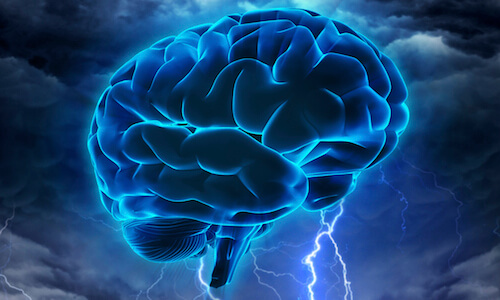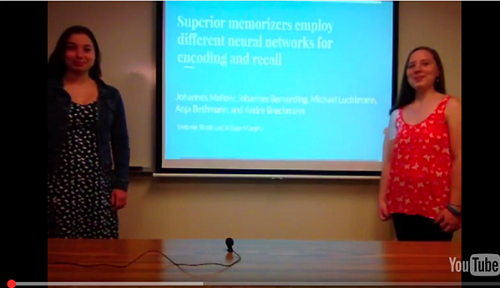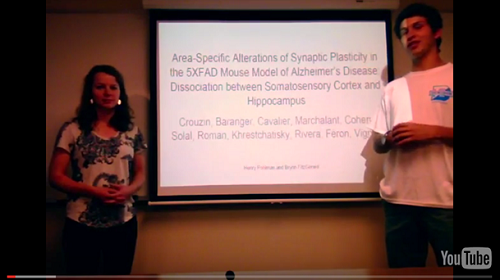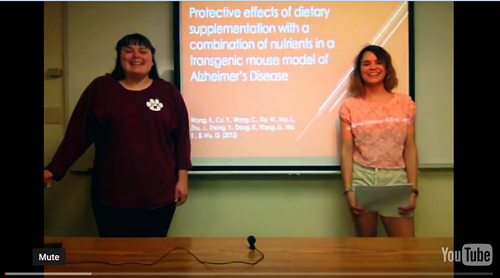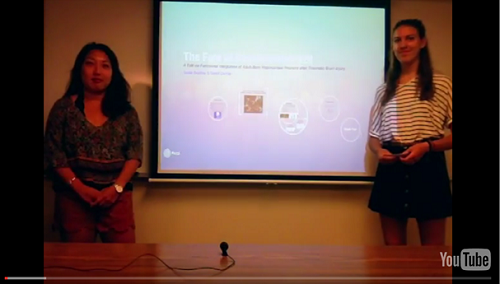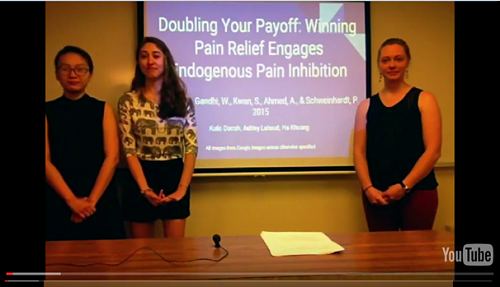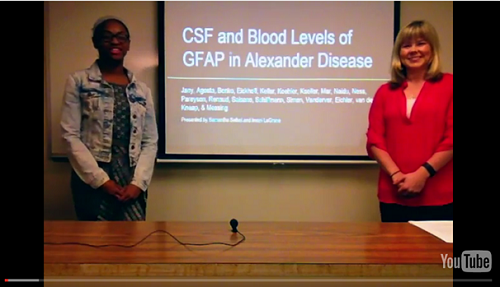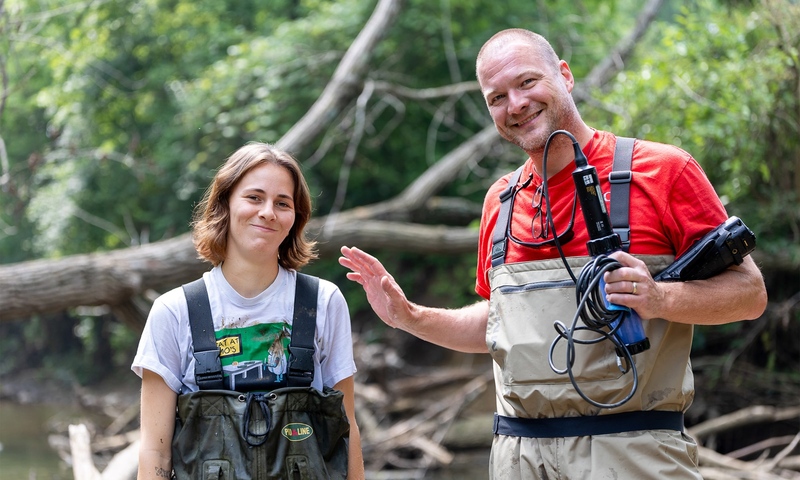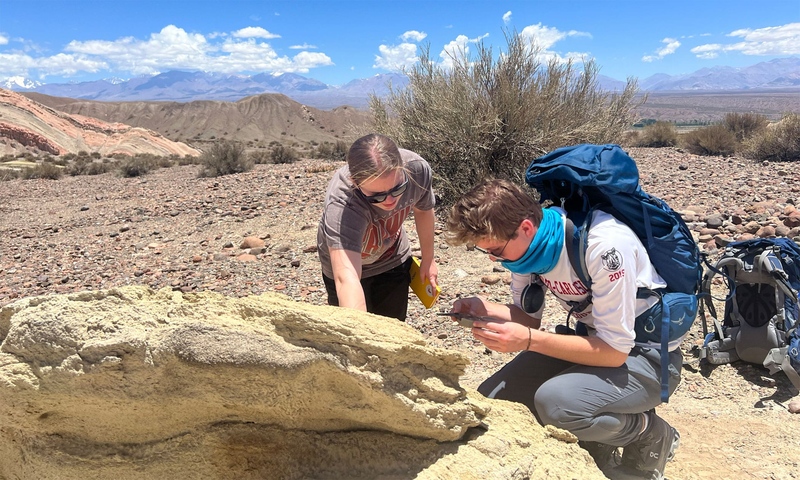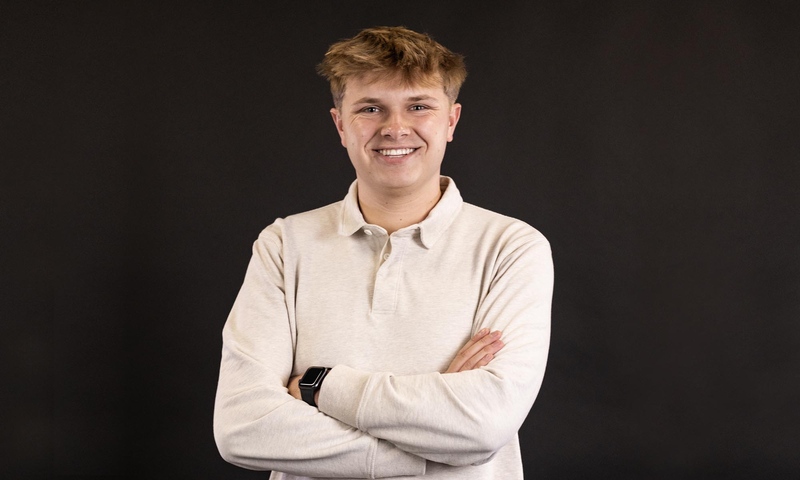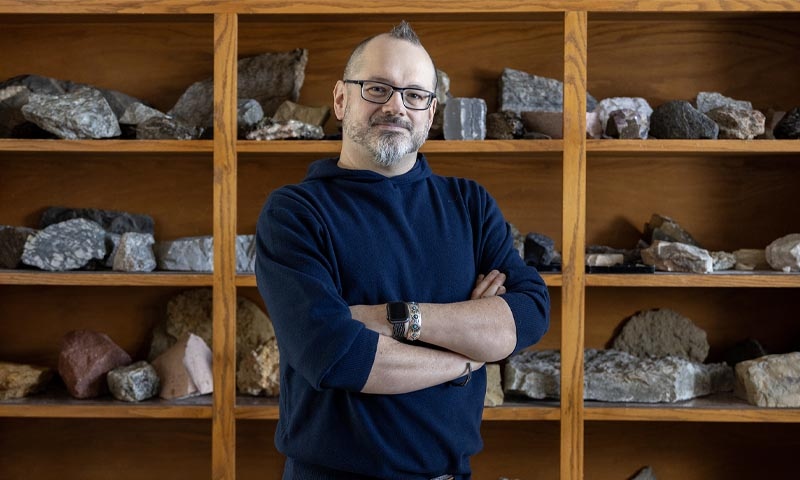Excellence and access. Those two goals drove the students’ culminating projects in Denison’s Advanced Neuroscience seminar.
To achieve excellence, students chose outstanding neuroscience articles published in rigorously peer-reviewed journals, with abstracts indexed by the National Library of Medicine and National Institutes of Health’s PubMed database.
To achieve access, the students eliminated journals hidden behind subscription based “pay walls” and opted instead for free open-access venues like the Public Library of Science and the Society for Neuroscience’s “eNeuro”. Additionally, students required each selected article to be published under the Creative Commons Attribution (CC BY) License –which promotes freely sharing scientific discoveries.
“Excellence and access. Those two goals drove the students’ culminating projects in Denison’s Advanced Neuroscience seminar.”
To prepare for the final project, across the semester students honed their skills in presenting primary Neuroscience literature sources. These sources spanned the following five topical areas covered by the Society for Neuroscience’s flagship publication, The Journal of Neuroscience: Cellular / Molecular; Development/Plasticity/Repair; Systems/Circuits; Behavioral/Cognitive; Neurobiology of Disease.
Working in pairs or trios, the students identified the topical areas they found most interesting, and subsequently chose a diverse range of articles with the following titles.
- “Superior memorizers employ different neural networks for encoding and recall”
- “Area-Specific Alterations of Synaptic Plasticity in the 5XFAD Mouse Model of Alzheimer’s Disease: Dissociation between Somatosensory Cortex and Hippocampus”
- “Protective Effects of Dietary Supplementation with a Combination of Nutrients in a Transgenic Mouse Model of Alzheimer’s Disease”
- “Plasma Soluble Prion Protein, a Potential Biomarker for Sport-Related Concussions: A Pilot Study”
- “Functional Integration of Adult-Born Hippocampal Neurons after Traumatic Brain Injury”
- “CSF and Blood Levels of GFAP in Alexander Disease”
- “Doubling Your Payoff: Winning Pain Relief Engages Endogenous Pain Inhibition”
Two other requirements challenged students on this final project.
First, the project required students to summarize their highly technical neuroscience article in a 10-15 minute YouTube video geared toward the “PBS audience”, i.e., intellectually curious adults with no neuroscience training.
Second, the students’ self-produced YouTube video had to be linked to a web-based TED-Ed Lesson. Each TED-Ed lesson contained a “Dig Deeper” section with links explaining the video’s vocabulary, and a “Think” section that comprised 15 student-generated questions. These included a mixture of short answer items, multiple choice items, items that required sketching relevant graphs via the online “DRAW.TO” website, and meta-cognitive items requiring reflection on one’s own comprehension.
In the end, the students had synthesized their Neuroscience Education & Research at Denison (NERD!), and blazed a neuroscience-education trail without borders, open to everyone, everywhere, 24/7.
